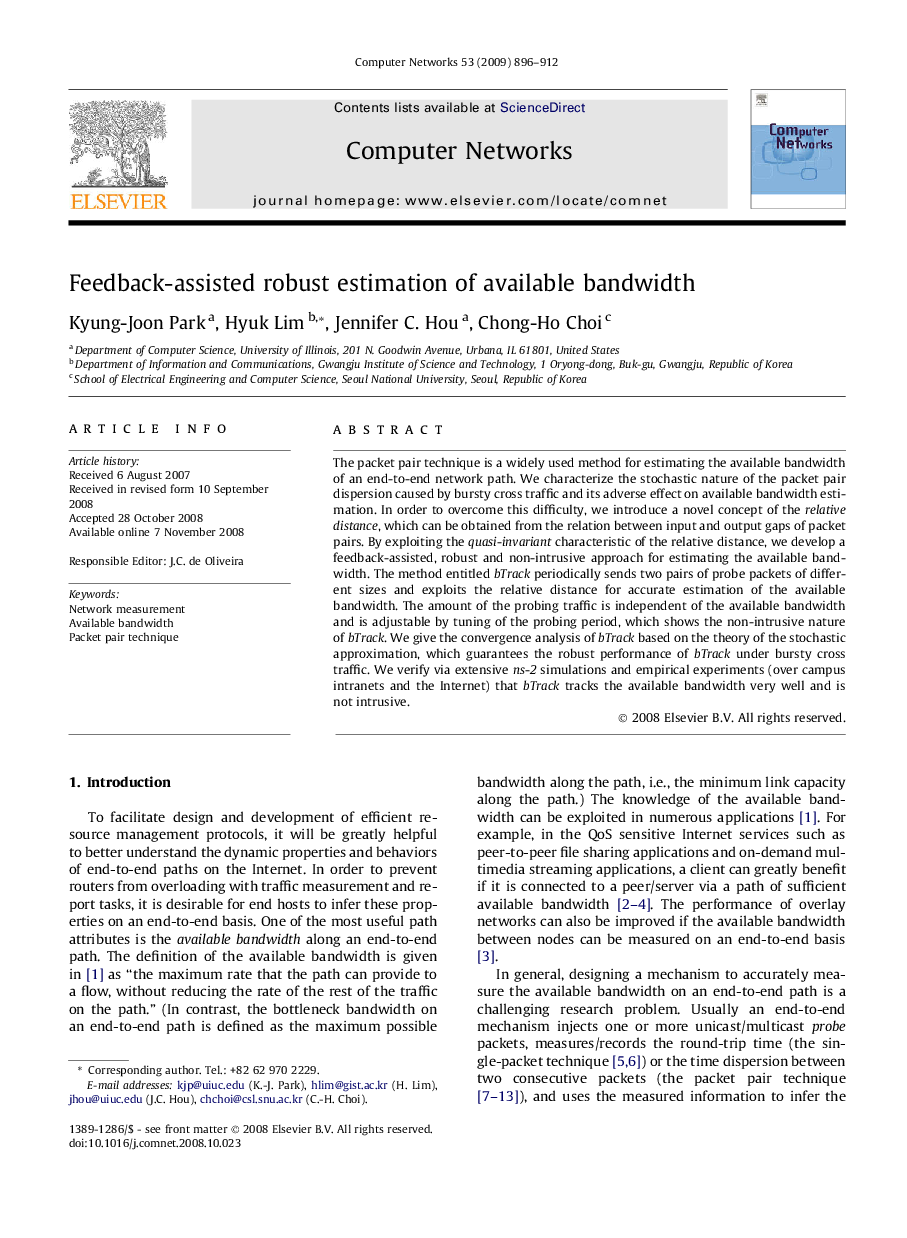| Article ID | Journal | Published Year | Pages | File Type |
|---|---|---|---|---|
| 453149 | Computer Networks | 2009 | 17 Pages |
The packet pair technique is a widely used method for estimating the available bandwidth of an end-to-end network path. We characterize the stochastic nature of the packet pair dispersion caused by bursty cross traffic and its adverse effect on available bandwidth estimation. In order to overcome this difficulty, we introduce a novel concept of the relative distance, which can be obtained from the relation between input and output gaps of packet pairs. By exploiting the quasi-invariant characteristic of the relative distance, we develop a feedback-assisted, robust and non-intrusive approach for estimating the available bandwidth. The method entitled bTrack periodically sends two pairs of probe packets of different sizes and exploits the relative distance for accurate estimation of the available bandwidth. The amount of the probing traffic is independent of the available bandwidth and is adjustable by tuning of the probing period, which shows the non-intrusive nature of bTrack. We give the convergence analysis of bTrack based on the theory of the stochastic approximation, which guarantees the robust performance of bTrack under bursty cross traffic. We verify via extensive ns-2 simulations and empirical experiments (over campus intranets and the Internet) that bTrack tracks the available bandwidth very well and is not intrusive.
